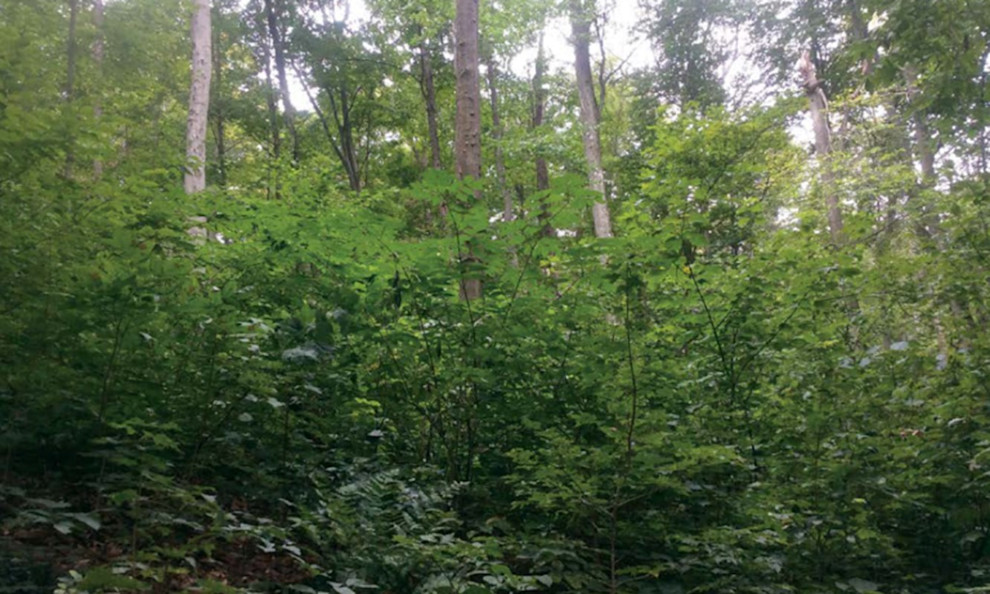Beech Bark Disease
American Beech is commonly found in the tolerant, hardwood forests of the Great Lakes- St. Lawrence Forest Region. While it is not a sought-after tree for lumber, it makes excellent firewood, contributes to mature forest canopies, and its beechnuts provide food to many wildlife species.
Beech bark disease (BBD) has caused the death of thousands of beech trees in the Muskoka region since 2010 and continues to spread. Two different organisms lead to BBD, which only affects American beech: a beech scale insect and a Neonectria pathogen (normally Neonecria faginata). There are no practical treatments to prevent this damage.
The proliferation of dense understories of beech saplings that are commonly observed in association with the death of mature trees prevent the survival and growth of other young trees and forest plants alike. Most beech will also die due to the disease before they can contribute to the forest canopy. Removal/control of these young beech is therefore important for long-term forest health.

Caption: Dense beech thicket developed under mature beech overstory killed by Beech Bark Disease
In 2002 and 2023, Westwind Forest Stewardship Inc. implemented a pilot project on seven private properties within the Muskoka Watershed. Understory beech trees were felled by brush saws and much of the area was replanted with Red Spruce, Hemlock, Red Oak and White Spruce to supplement natural regeneration of Sugar Maple and Yellow Birch.
Tending of the newly planted trees may be required and beech control may have to be repeated as re-sprouting of the cut beech is likely to occur. Aside from mechanical removal of beech with brush saws, there are other options available for landowners and forest managers, including the use of registered and approved herbicides that may have advantages. Stem-specific treatments such as basal bark applications and stem injections (such as hack and squirt) limits the amount of herbicide used to only the beech understory.
Each landowner’s objectives for their properties – short-, medium- and long-term – as well as forest condition need to be considered before implementing such a project.